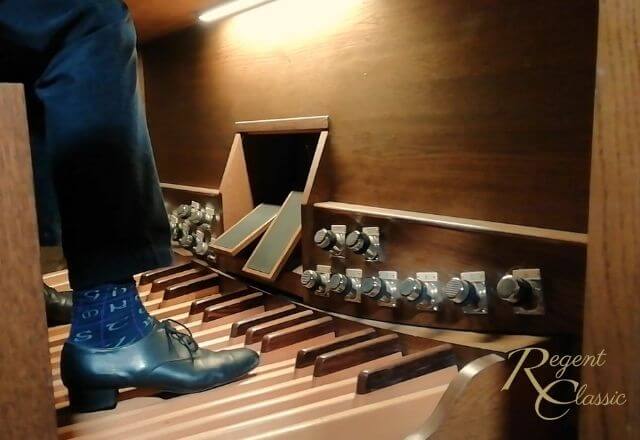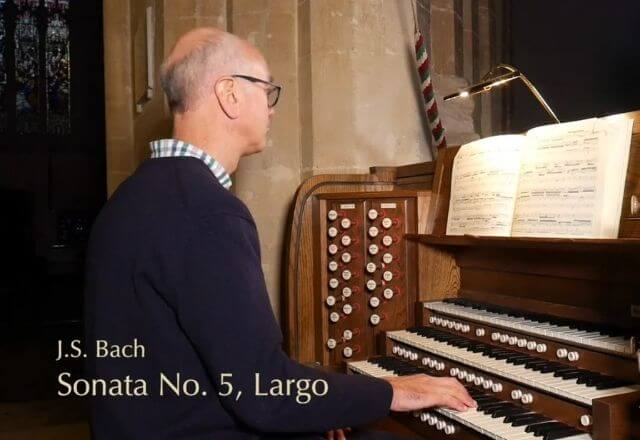Bach’s organ sonatas, often known as “trio sonatas”, are challenging exercises for the organist.
Each of the parts, like the instruments in a trio, is usually independent of the others, the hands often working in counterpoint or dialogue, the pedals mostly acting like a basso continuo, but sometimes taking a more active role in the counterpoint. There is nowhere for the player to hide and there is a need for poise and balance.
The results can be beautiful if these challenges are met with accuracy and beauty of playing.
Slow movement of 5th Sonata
The piece I’m playing here is the slow movement of the 5th Sonata, which is in A minor, the relative minor of the sonata’s key of C major. There are some suggestions that this movement is an earlier work, as it also appears rather randomly as a slow movement, at the end of the BWV 545 Prelude and Fugue in some editions.
There are no hard and fast rules about how to voice Bach’s sonatas, and organists have spent much breath discussing the most appropriate way of going about them.
Sometimes it seems clearest and best if the pedals are based on eight-foot tone, and this usually works quite well when the pedals have an active counterpoint role. It helps to avoid the pedal line being too woofy and heavy.

When, as in this slow movement, the pedals are acting more like a continuo bass, there is an argument for including gentle sixteen-foot tone with something like an eight-foot flute or gentle string to provide definition. The 16’, though, should never be stodgy, and it’s probably best if it’s not a reed either (I’d say not even a Fagott).
The voices used for the manual lines can be chosen from a wide palette, and one can hear dramatically different renditions depending on subjective choices made by performers. One can encounter plaintive reeds in one voice and a diapason in the other, or two differing flutes, or perhaps a mutation-based combination such as including the larigot or tierce in one line. The key is to ensure an even balance of loudness and clarity between the two manual lines and pedals.
In this slow movement I have chosen in this case to use two characterful and fairly chiffy flutes on the manuals, one of them with a tremulant to add some tonal variety.
More Videos with Francis Rumsey
- Percy Whitlock: Chorale Prelude on ‘Werde Munter’
- Mendelssohn (arr. W.T. Best): Overture to ‘St. Paul’
- Elgar (arr. Martin): Imperial March, Op. 32
- Alfred Hollins: A Trumpet Minuet
I’m a retired academic, with a background in music and audio engineering. I’m currently a consultant for Viscount & Regent Classic Organs, as well as being a freelance organist, including a role as organist/choirmaster at St Mary’s, Witney. I sing bass with Oxford Pro Musica Singers and the Cathedral Singers of Christ Church, Oxford.


